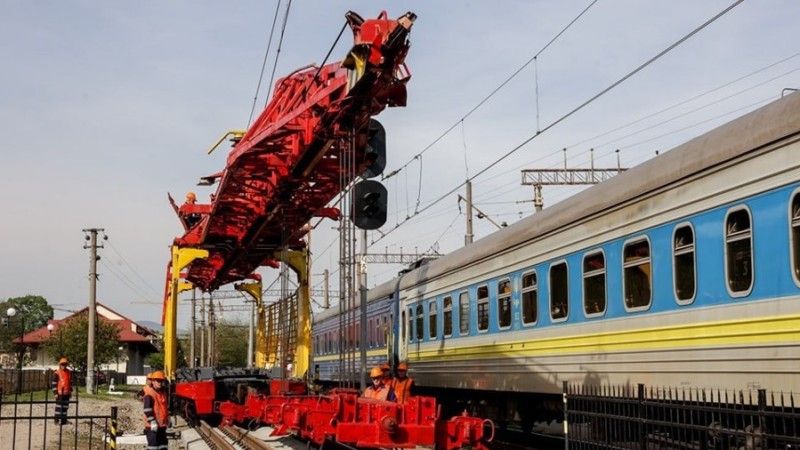
Photo. European Invest Bank
Ukraine has just opened its first railway line with the European track width standard, marking the beginning of track gauge conversion from Russian track gauge. If finalized, it would empower the country’s infrastructural integration with the EU, while further severing historical ties with Russia.
On September 5, the first EU standard 22-kilometer line was completed connecting the Ukrainian cities of Uzhhorod (bordering Slovakia) and Chop (close to Hungary). Funded by an EU grant of €28.6 million, the new railway will significantly improve travel times and trade volumes between these cities and the EU by eliminating delays caused by gauge changes between different train systems.
Its completion demonstrates that Ukraine can carry out significant infrastructure projects and modernize even during wartime. More broadly, the new rail line represents an important milestone in developing and integrating Ukraine’s transport system with Europe’s under the EU-Ukraine Solidarity Lanes, as the country was forced to completely pivot away from its traditional infrastructure and trade orientation toward Russia.
Unsolicited Historical Inheritance
Today’s situation has its roots in the 19th century differences in track gauge width choices as railways were developed in various parts of the world. In Europe and North America, its size was standardized to achieve high interoperability between different railway systems to ease transport of goods and passengers across borders. Meanwhile, the Russian Empire adopted a wider, 1520 mm gauge, which was inherited by all post-Soviet countries, including Ukraine.
That’s why Ukraine’s rail network had been predominantly oriented toward Russia until 2022. Sharing the same rail gauge and Soviet-integrated rail system privileged trade exchange with Moscow. This fact accounted for the Kremlin’s „infrastructural” sphere of influence, as the way in which the Ukrainian rail network was historically structured presupposed Russia as its major trade partner. This dependency ended abruptly when the invasion forced Ukraine to completely reconfigure its supply chains toward the West.
Europeanizing Ukrainian Railways
Since Russia’s invasion, Ukraine has intensified efforts to align its rail network with EU technical and legal standards. This objective is supported by the Ukrainian National Transport Strategy, approved in late 2024, which aims to integrate Ukraine’s transport system into the Trans-European Transport Network. By the end of 2025, the Ukrainian Parliament is expected to pass an already drafted law on traffic safety and rail transport interoperability, enabling the „Europeanization” of Ukrainian railways.
Given Ukraine’s war-depleted budget, EU financial support will be crucial in transforming the country’s rail network. This support is already provided through two major financial instruments—the Ukraine Facility and the Connecting Europe Facility—which offer Ukraine billions of euros annually in grants and loans for recovery, reconstruction, and modernization.
Europeanizing Ukrainian railways would firmly embed Ukraine infrastructurally in the EU by facilitating cross-border passenger and cargo transport. This enhanced connectivity could in turn foster deeper integration in trade, labor markets, and cultural exchange. Furthermore, improved logistics would strengthen the country’s post-war recovery, resilience, and deterrence through efficient and cost-effective supply chains from the West.
Author: Kacper Kremiec